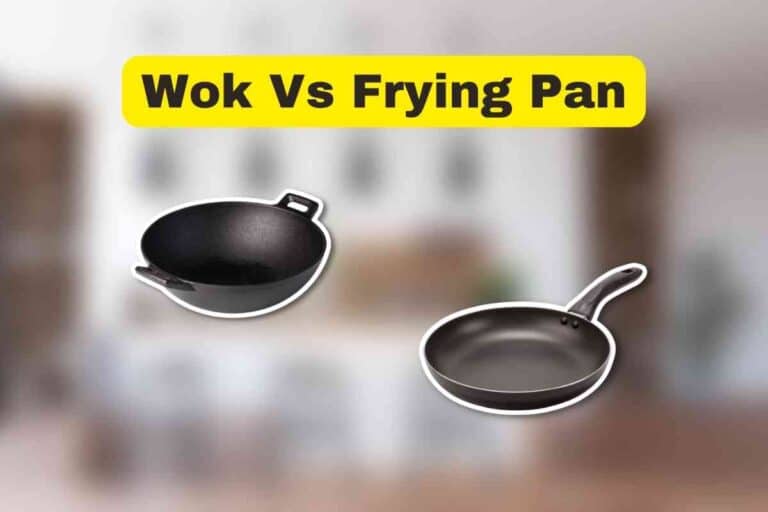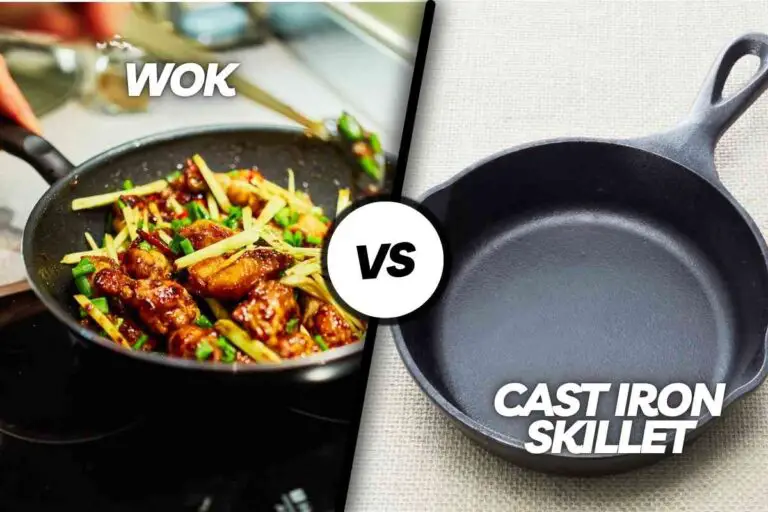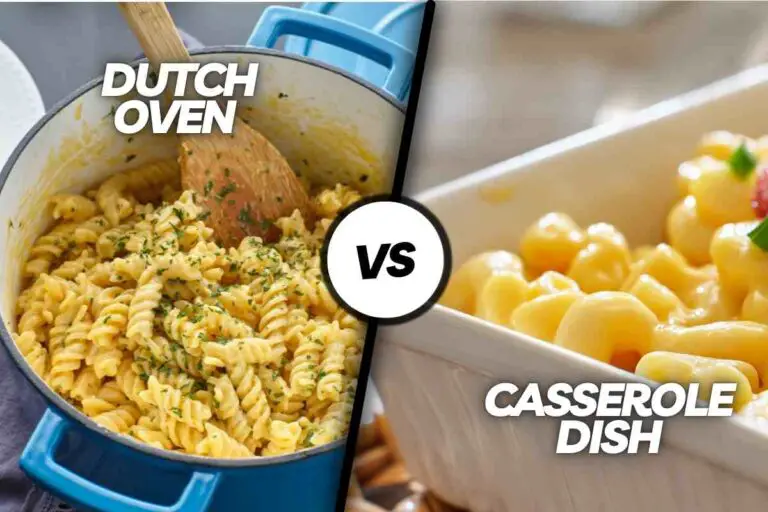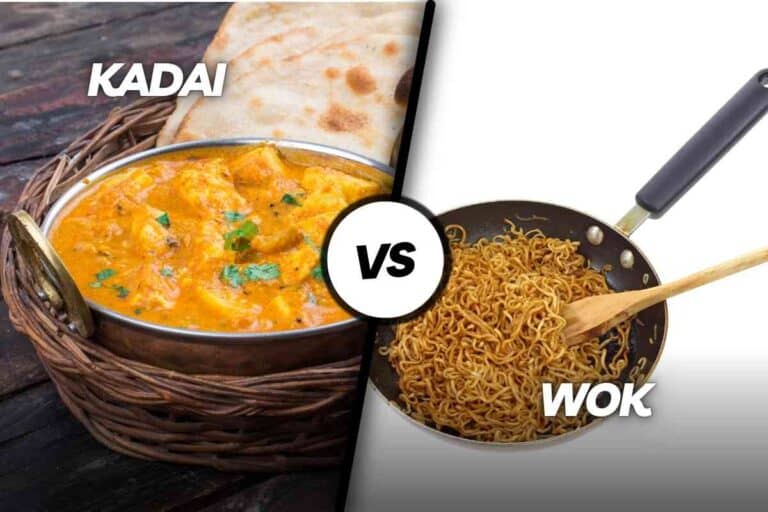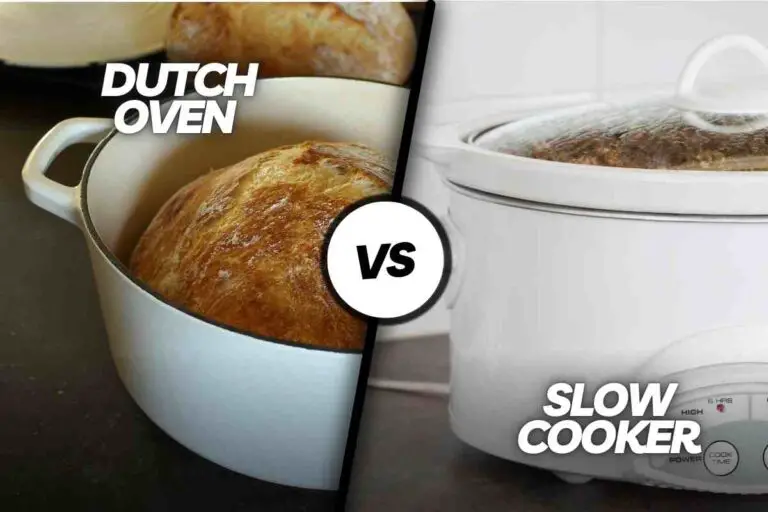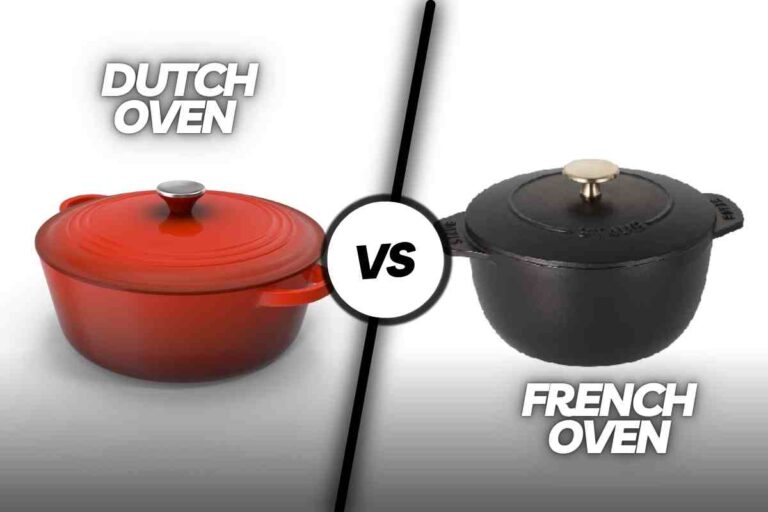9 Differences: Skillet Vs Frying Pan
The main difference between a skillet and a frying pan is their design and characteristics. Skillets typically have slightly deeper sides and a more robust build, while frying pans are thinner and shallower with rounded sides. A skillet and a frying pan share similar functionality, but they have distinct features.
These differences in design affect their suitability for various cooking tasks and techniques.
This construction makes skillets perfect for sautéing and stir-frying dishes, as the increased depth accommodates more ingredients while the sloped sides allow for easy stirring and flipping.
On the other hand, frying pans, with their flat bottoms and wide, flared sides, are better suited for tasks that involve high-temperature cooking, such as deep-frying and searing, thanks to their ability to rapidly and evenly distribute heat across a wide surface area.
9 Factors: Skillet Vs Frying Pan
| Factor | Skillet | Frying Pan |
|---|---|---|
| Depth of Cookware | Deeper, allowing for more ingredients and liquids, ideal for sautéing and stir-frying. | Shallower, best for high-temperature cooking like searing and deep-frying. |
| Shape | Sloped or slanted sides aid in easy stirring and flipping of ingredients. | Flared sides provide a wider surface area for rapid and even heating. |
| Heat Distribution | Retains heat well, ensuring even cooking and browning, great for building crusts. | Rapid and uniform heat distribution is perfect for high-temperature cooking. |
| Cooking Techniques | Ideal for stir-frying, sautéing, and dishes with constant movement of ingredients. | Excellent for searing, grilling, deep-frying, and quick cooking at high temperatures. |
| Versatility | Versatile but excels in specific tasks; suitable for a wide range of recipes. | Specialized for high-heat cooking but less versatile compared to skillets. |
| Material Options | Available in cast iron, non-stick, stainless steel, and more. | Comes in various materials, including cast iron, carbon steel, and non-stick coatings. |
| Suitable Recipes | Great for dishes requiring depth and liquid, such as curries, stir-fries, and braised meals. | Perfect for recipes demanding rapid and even heating, like seared steaks or crispy fried foods. |
| Cleaning and Maintenance | Cast iron skillets require seasoning and careful cleaning. Non-stick options offer easier cleanup. | Depending on the material, maintenance may vary, with non-stick options being simpler to clean. |
| Lid Availability | Cast iron skillets often come with lids for braising and slow-cooking. | Frying pans typically do not include lids. |
| Cooking Speed | Well-suited for recipes that require longer cooking times or simmering. | Excellent for quick cooking tasks that demand high heat. |
Key Takeaway
- Skillets have more depth and are great for sautéing and stir-frying meals where the ingredients are constantly moving. On the other hand, frying pans with wide, flared sides are great for cooking at high temperatures, like searing and deep-frying.
- Frying pans spread heat quickly and evenly, making them great for fast, high-heat cooking. On the other hand, skillets are great for making crusts because they keep heat well and cook and brown food evenly.
- Skillets can be used for many things, but they are best at doing certain things. This makes them good for a wide range of recipes. Unlike skillets, frying pans are only good for cooking over high heat and can’t be used for as many things.
- Maintenance for different materials is different. For example, cast iron skillets need to be seasoned and cleaned carefully. Non-stick cooking pans are easier to clean, but they might not last as long as cast iron ones.
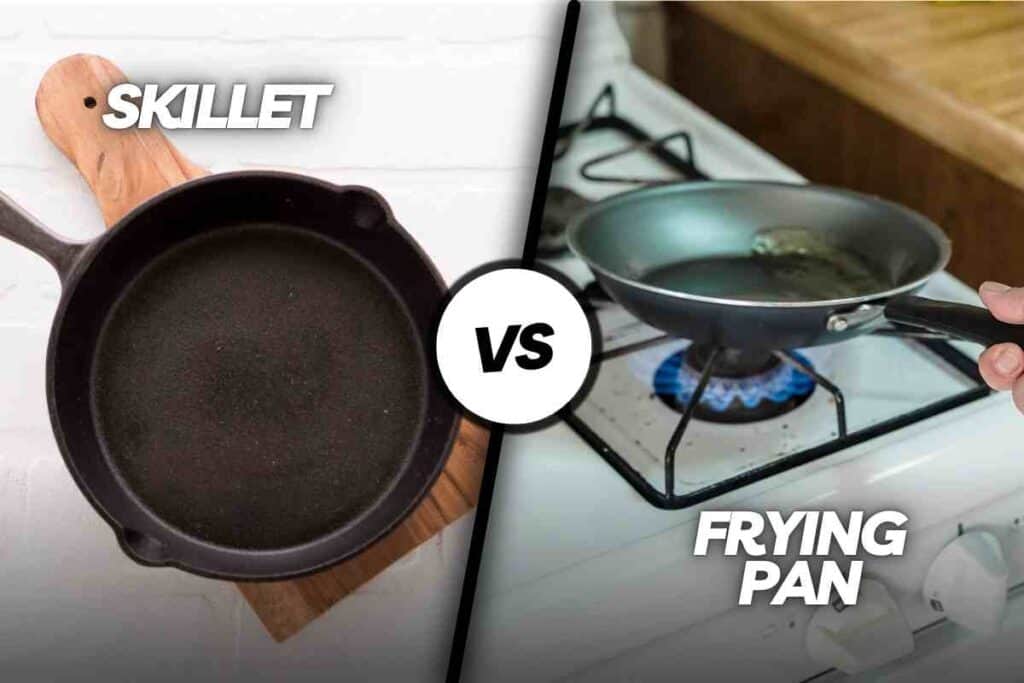
Understanding Skillets
Let’s start by demystifying skillets. A skillet is a versatile piece of cookware with a flat base, sloped or slanted sides, and a handy handle. This design is specifically crafted to make cooking a breeze, especially for dishes that require constant movement.
Picture yourself stir-frying a medley of colorful vegetables or searing a perfectly marbled steak – a skillet is your trusty companion in these culinary endeavors.
Skillets come in various materials, but one of the most popular choices is cast iron. Cast iron skillets are revered for their ability to retain heat, which is crucial for achieving that coveted flavorful crust on proteins and other foods.
Many cast iron skillets even come with a lid, allowing you to take your culinary adventures to the next level by braising and slow-cooking with finesse.
However, it’s worth noting that skillets can also be found in non-stick and stainless-steel variations, each with its own set of advantages.
Exploring Frying Pans
Now, let’s shift our attention to frying pans. A frying pan, in essence, is a metal container equipped with a long handle, designed specifically for the purpose of cooking food. These kitchen staples come in an array of materials, including but not limited to frying, non-stick, and cast iron.
The defining characteristics of a frying pan are its flat bottom, wide base, and flared sides. This unique shape is ideal for one key feature: rapid and even heating.
Frying pans excel at reaching high temperatures quickly, making them the go-to choice for tasks like deep-frying and high-temperature cooking.
Non-stick frying pans, equipped with a special coating, prevent food from sticking, making cleanup a breeze. On the other hand, cast-iron frying pans are known for their heat retention, perfect for superhot applications like searing.
Key Differences Between Skillets and Frying Pans
Now that we’ve introduced both skillets vs frying pans, let’s delve into the key differences that set them apart:
- Depth and Surface Area: Skillets are generally deeper and offer a larger surface area compared to a standard frying pan. This extra depth makes skillets better suited for sautéing and stir-frying.
- Cooking Techniques: Frying pans, with their rapid heating capability, are ideal for deep-frying and high-temperature cooking. On the other hand, skillets are slightly more versatile and can be used interchangeably with frying pans for many tasks.
- Interchangeability: It’s essential to note that skillets and frying pans are essentially the same type of cookware with some minor differences. Both have sloped sides, come in various materials, and typically do not come with lids. The confusion between the two terms often arises from the general use of the word “pan” to refer to various cooking vessels.
Materials for Skillets and Frying Pans
The choice of material for your cookware can significantly impact your cooking experience. Let’s explore the common materials used for skillets and frying pans:
- Cast Iron: Cast iron skillets and frying pans are heavy but excel at retaining heat. When properly seasoned, they become virtually non-stick, making them a favorite among cooking enthusiasts.
- Carbon Steel: Carbon steel pans heat up quickly and are incredibly versatile. They are also lighter than cast iron, making them a more user-friendly option.
- Stainless Steel: Stainless steel offers excellent heat retention, is easy to clean, and comes in various grades. It’s a durable choice for both skillets and frying pans.
- Aluminum: Aluminum cookware is an economical option with a smoother surface and resistance to corrosion. While it doesn’t retain heat as well as cast iron, it’s an excellent choice for many cooking tasks.
Saute Pan Differences
In the realm of cookware, there’s another player in the game – the sauté pan. Sauté pans are deeper than skillets and frying pans, featuring vertical, straight sides that help prevent spills and accommodate larger quantities of ingredients.
Typically equipped with a long handle (and sometimes a side handle) and a lid, sauté pans are perfect for slow cooking with sauces and gravies.
They’re a valuable addition to your kitchen arsenal for recipes that require simmering and reducing liquids.
When to Use Skillets?
Now that we’ve unraveled the differences between skillets and frying pans let’s discuss when to reach for a trusty skillet:
High-Heat Cooking
Skillets shine when it comes to high-heat cooking techniques. They’re perfect for searing meat to perfection or quickly stir-frying your favorite veggies.
The sloped sides of skillets make them particularly adept at stir-frying, where constant movement is key.
Bottom Line
In the skillet vs. frying pan debate, the bottom line is that these two kitchen essentials are often interchangeable for most cooking tasks.
The choice between them depends on the recipe at hand, your access to food with a spatula (thanks to the sloped sides of skillets), the required cooking temperature, the speed at which you need to prepare your meal, and the amount of liquid involved in your dish.
Whether you’re whipping up a quick weekday dinner or experimenting with a gourmet recipe, understanding the differences between skillets and frying pans empowers you to make informed decisions in the kitchen.
So, next time you’re in the cookware aisle, you’ll know precisely which tool to add to your collection.

